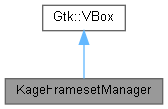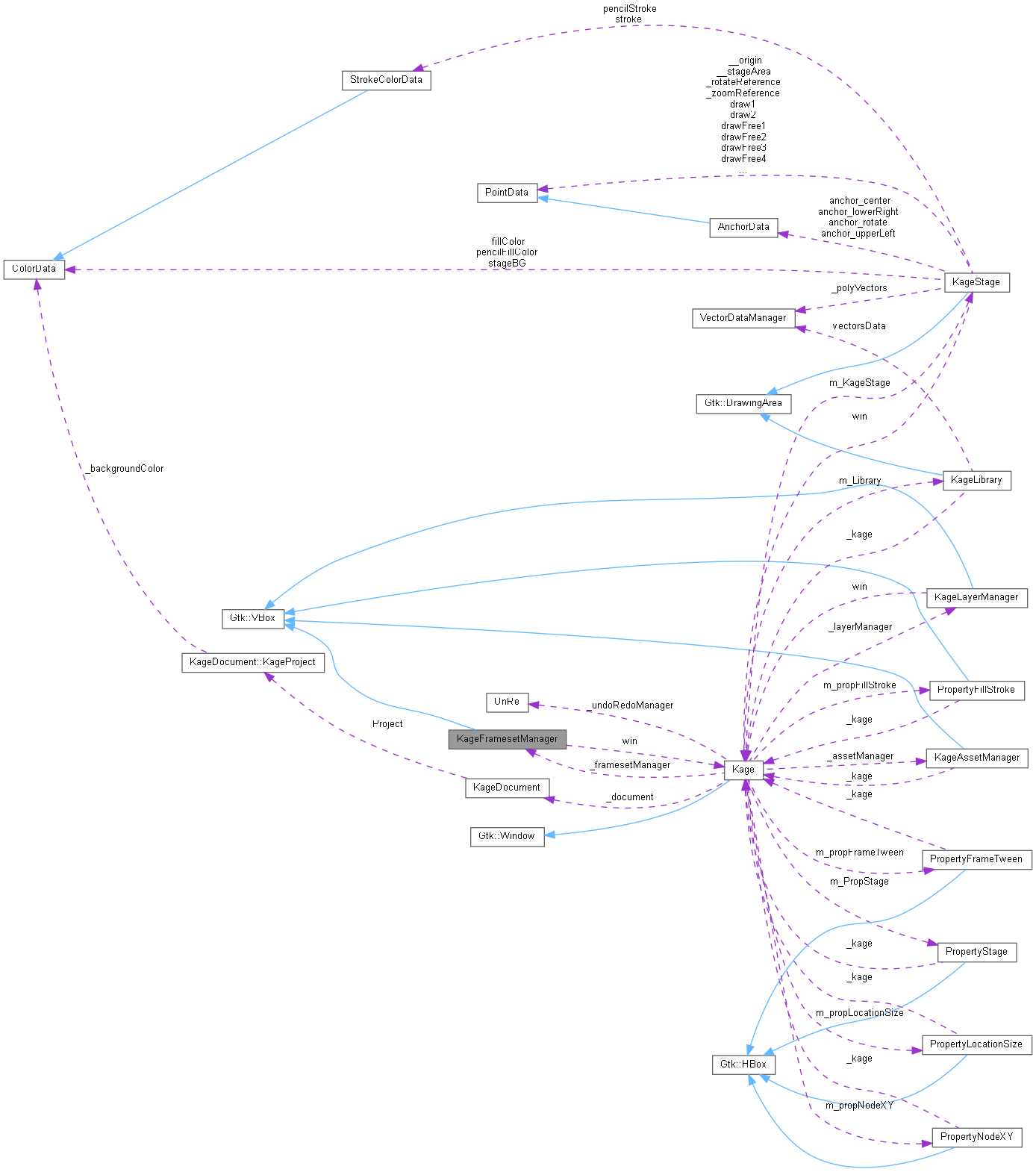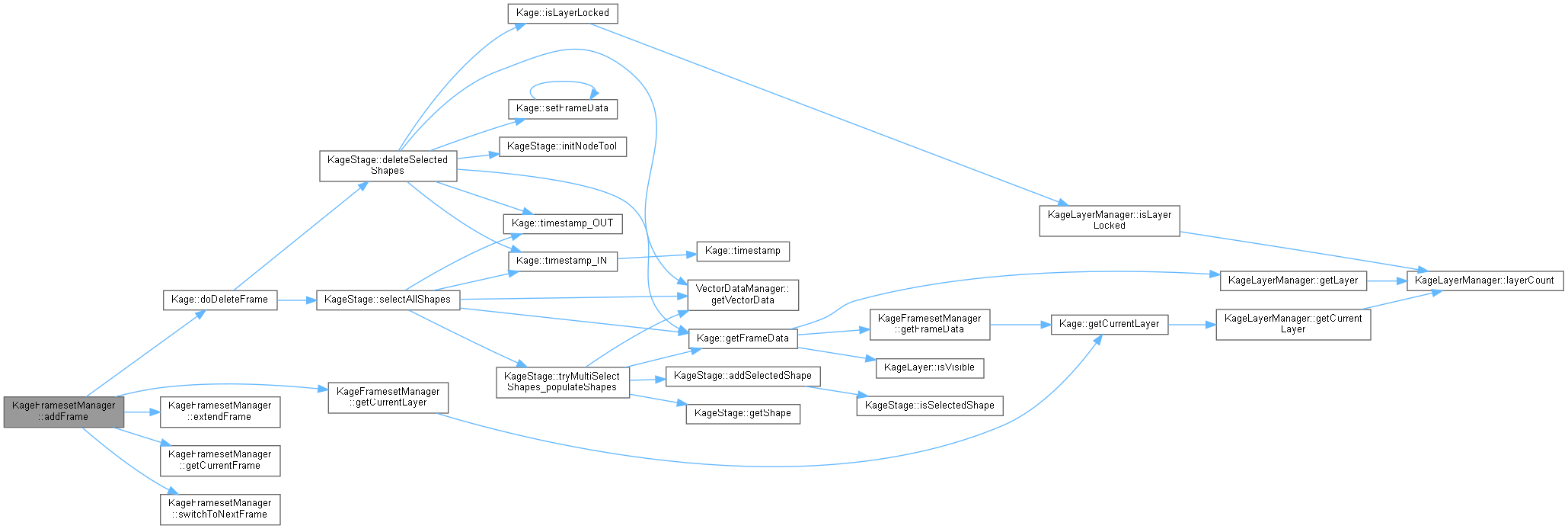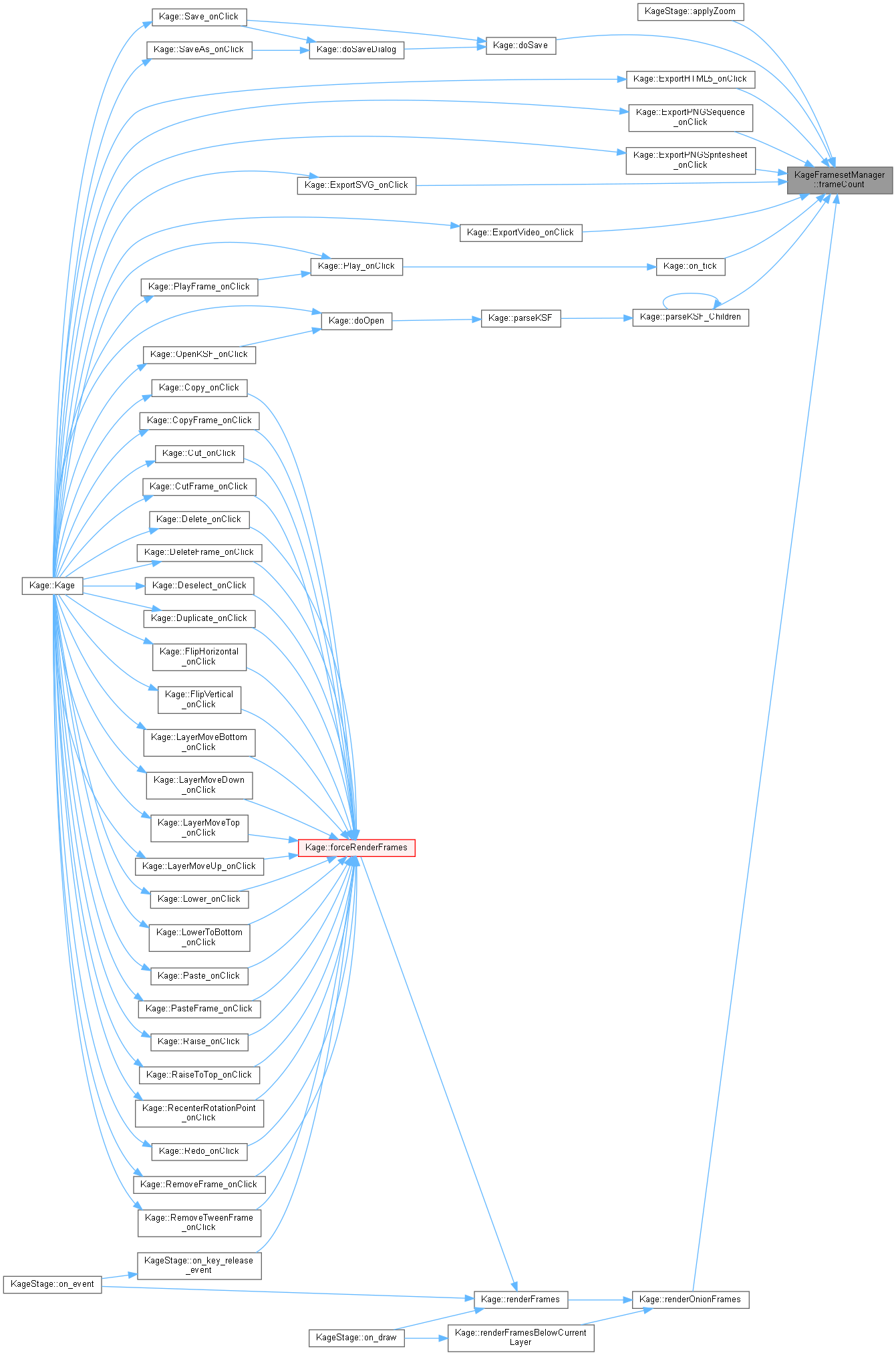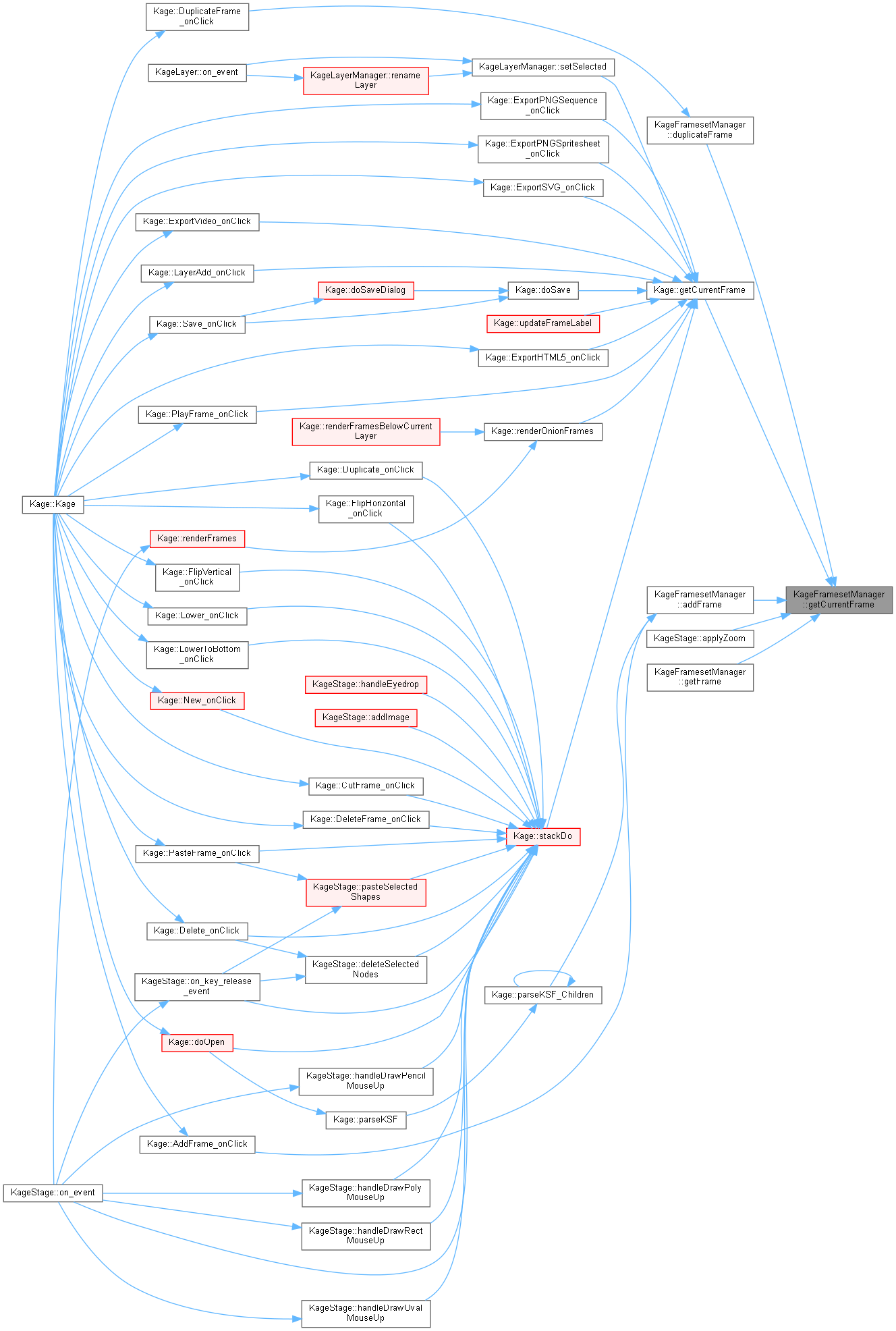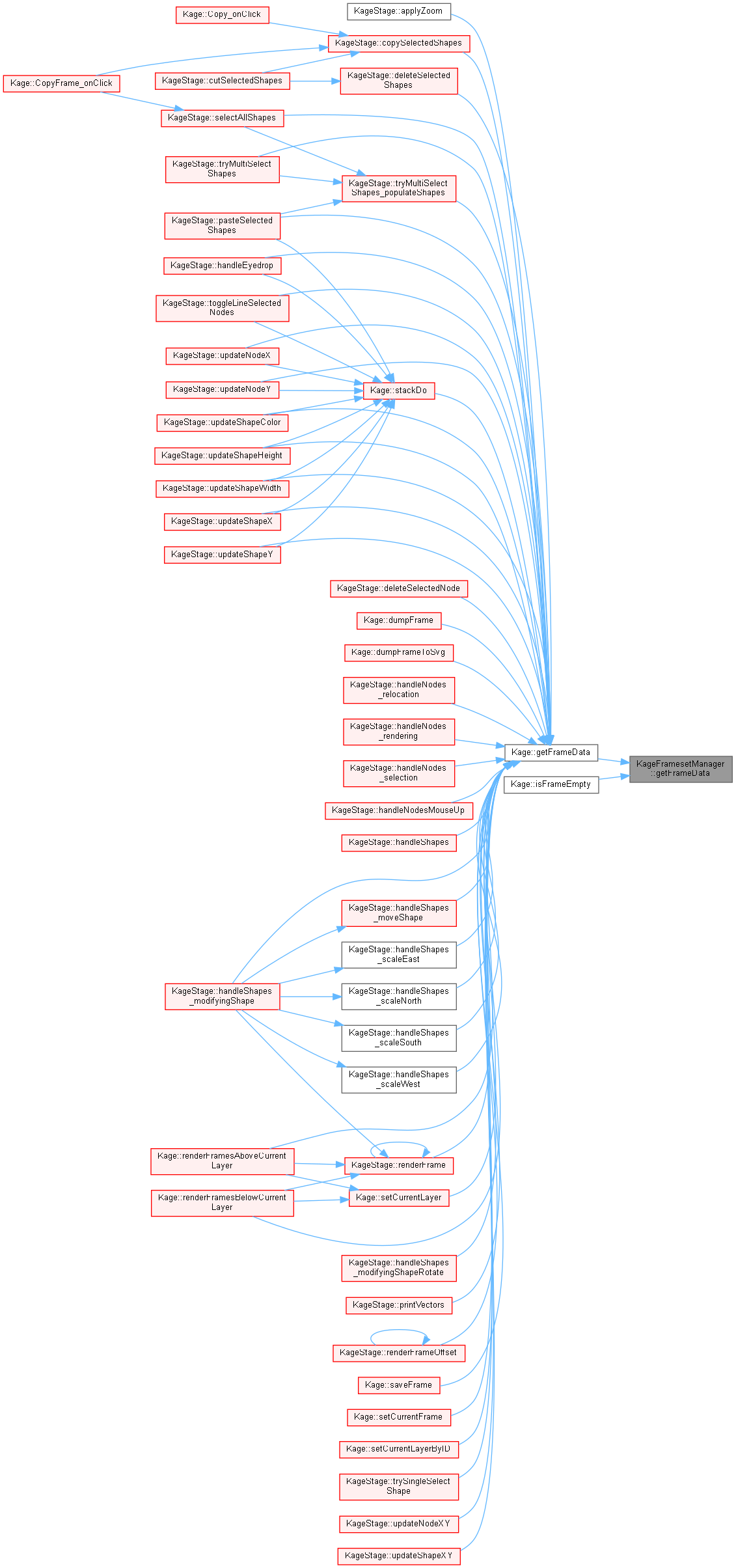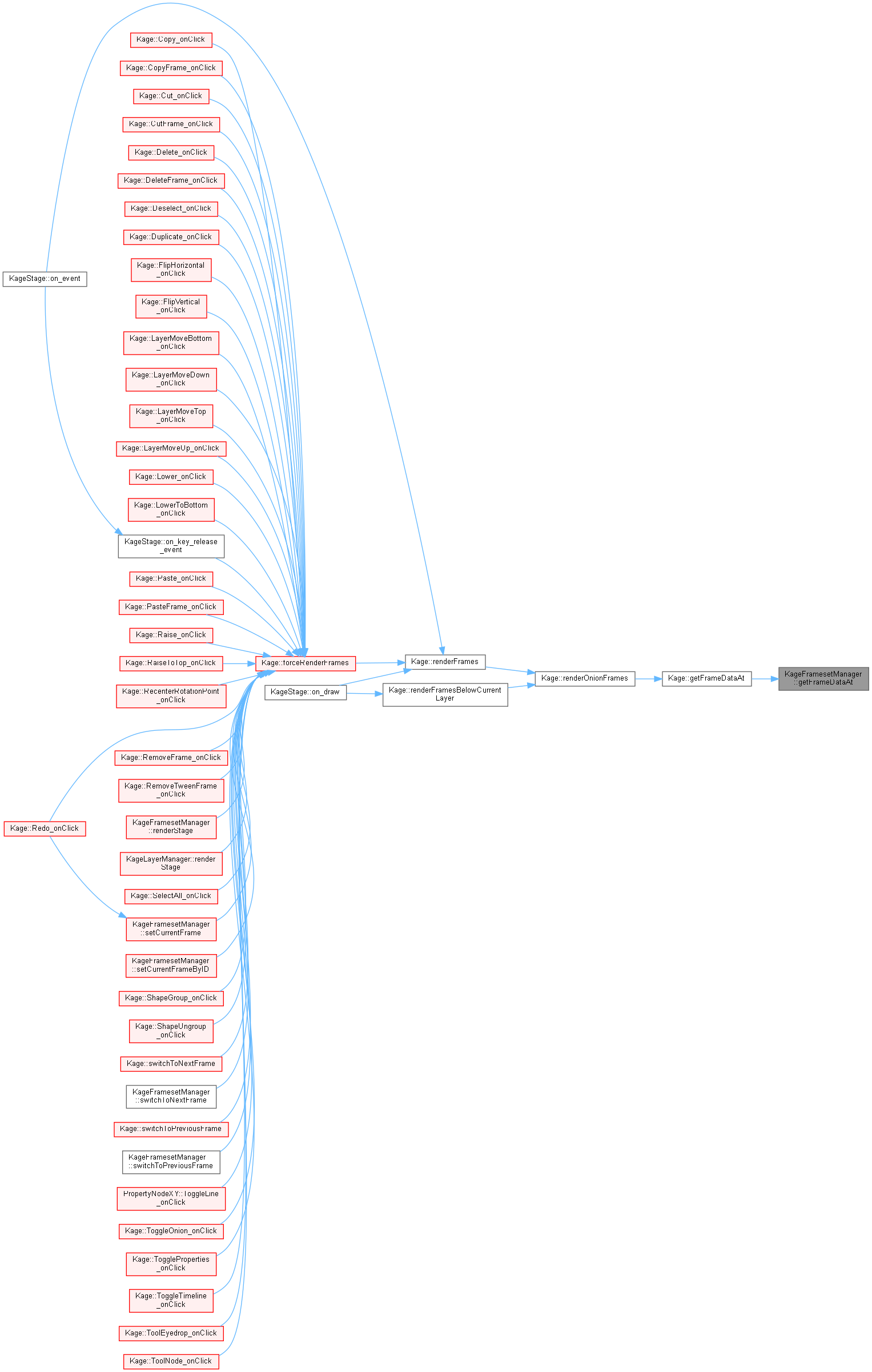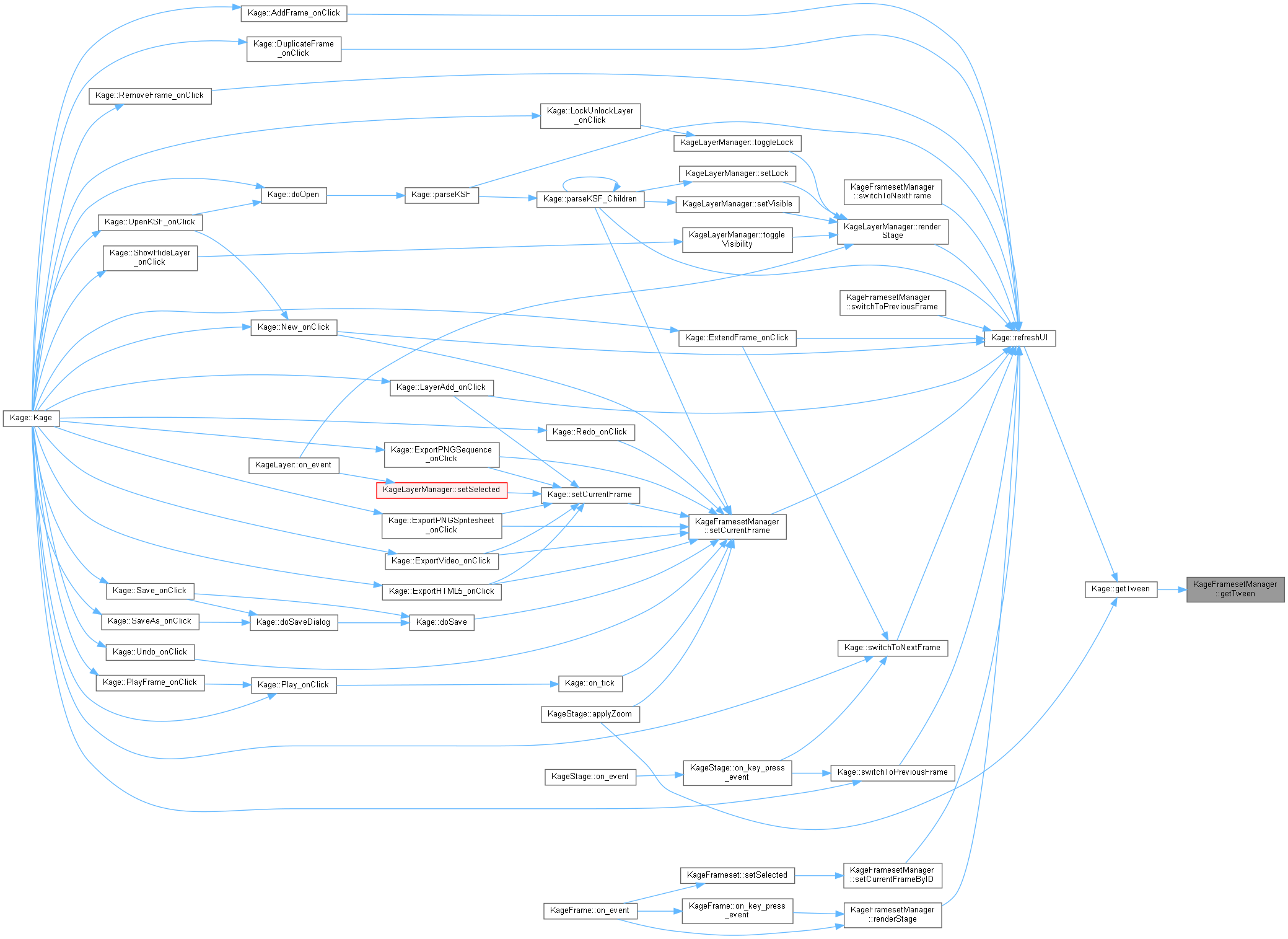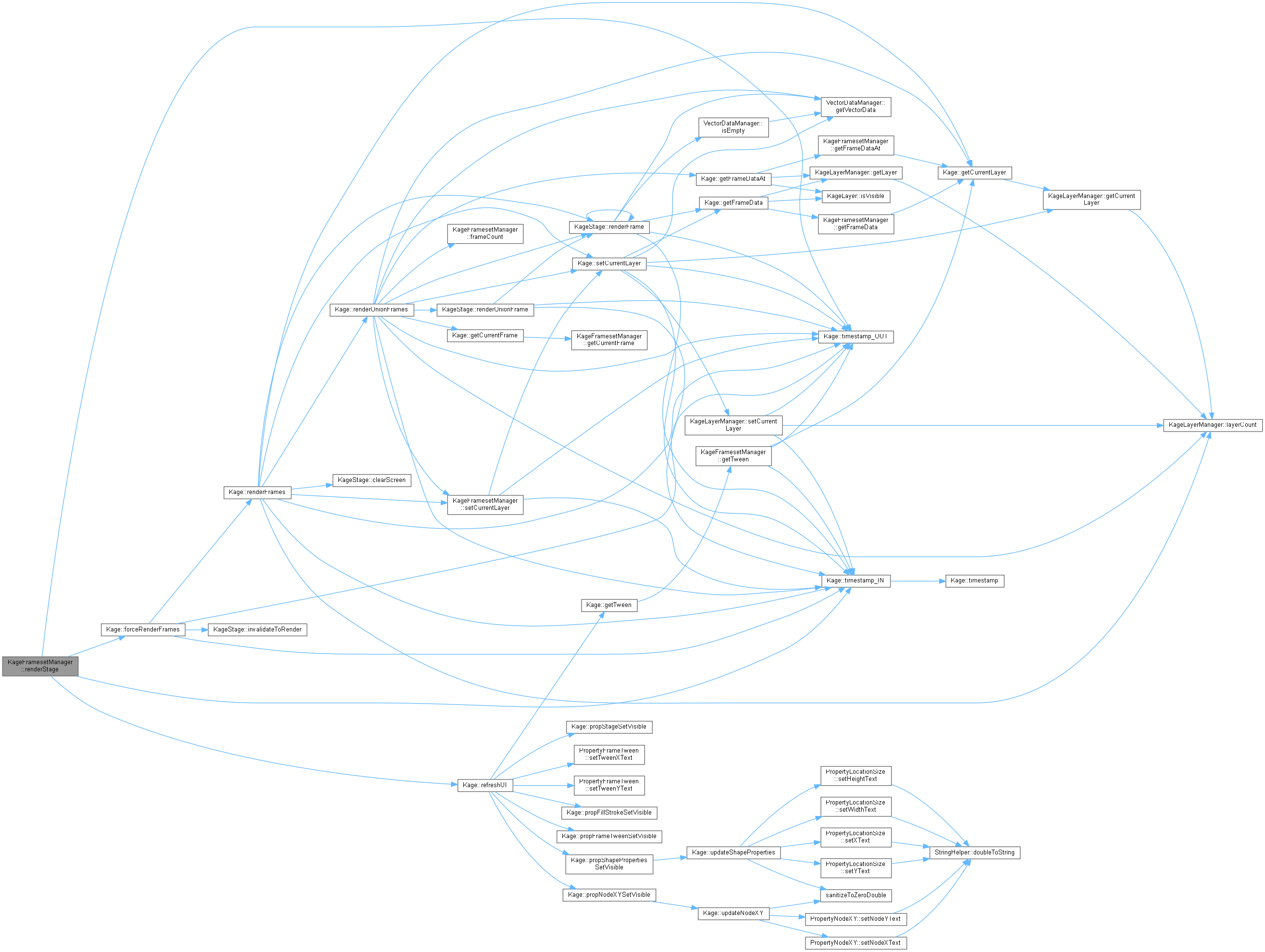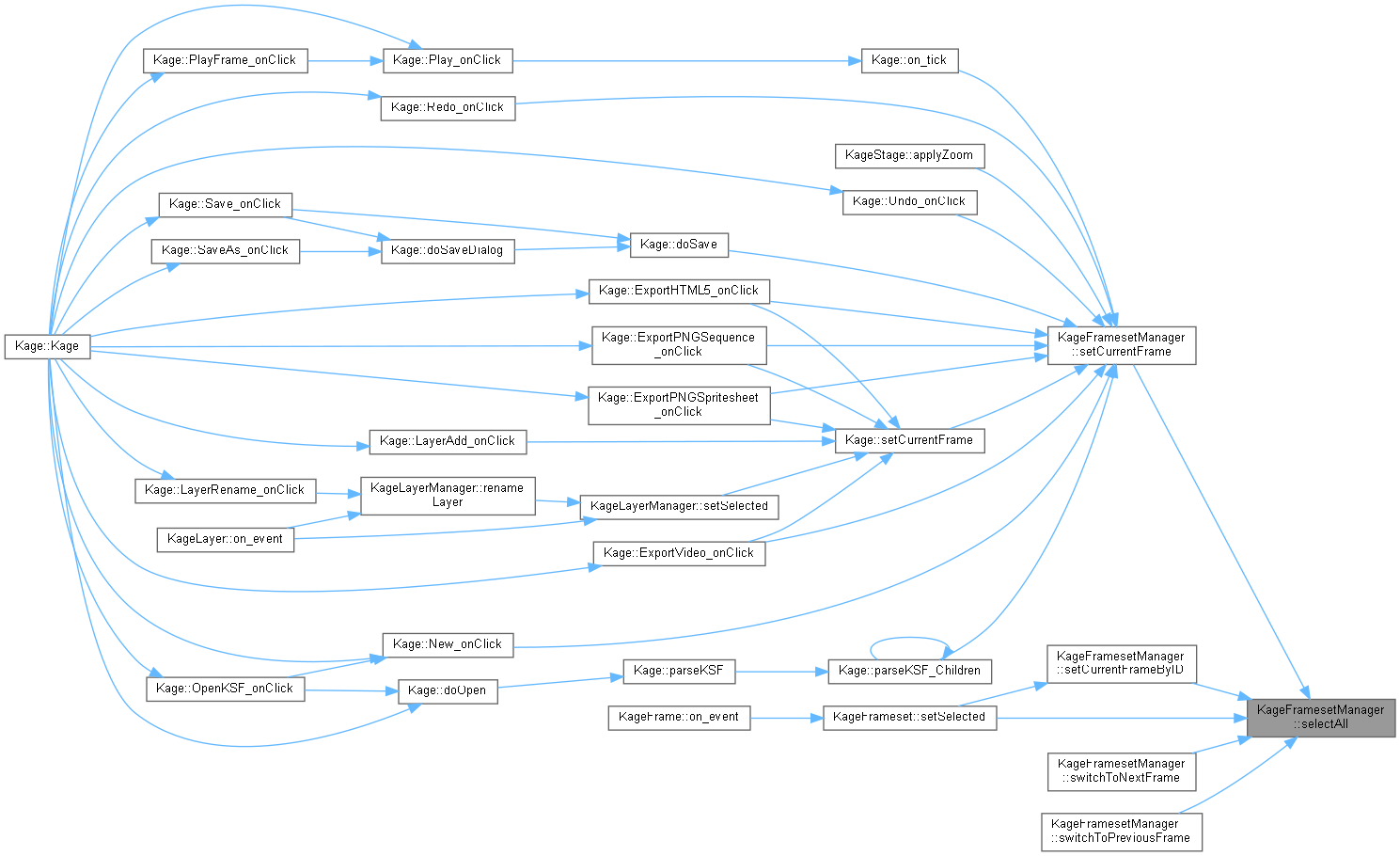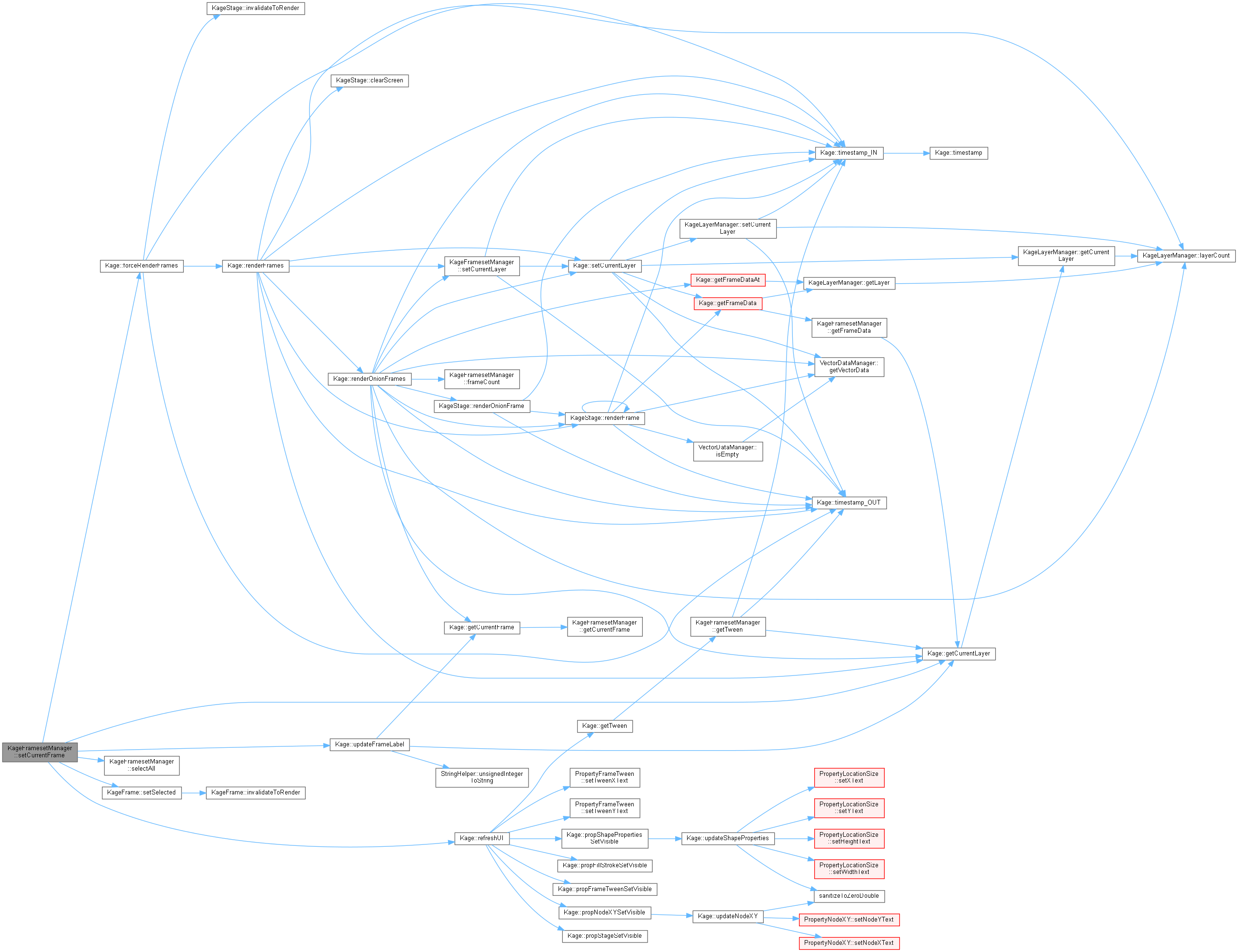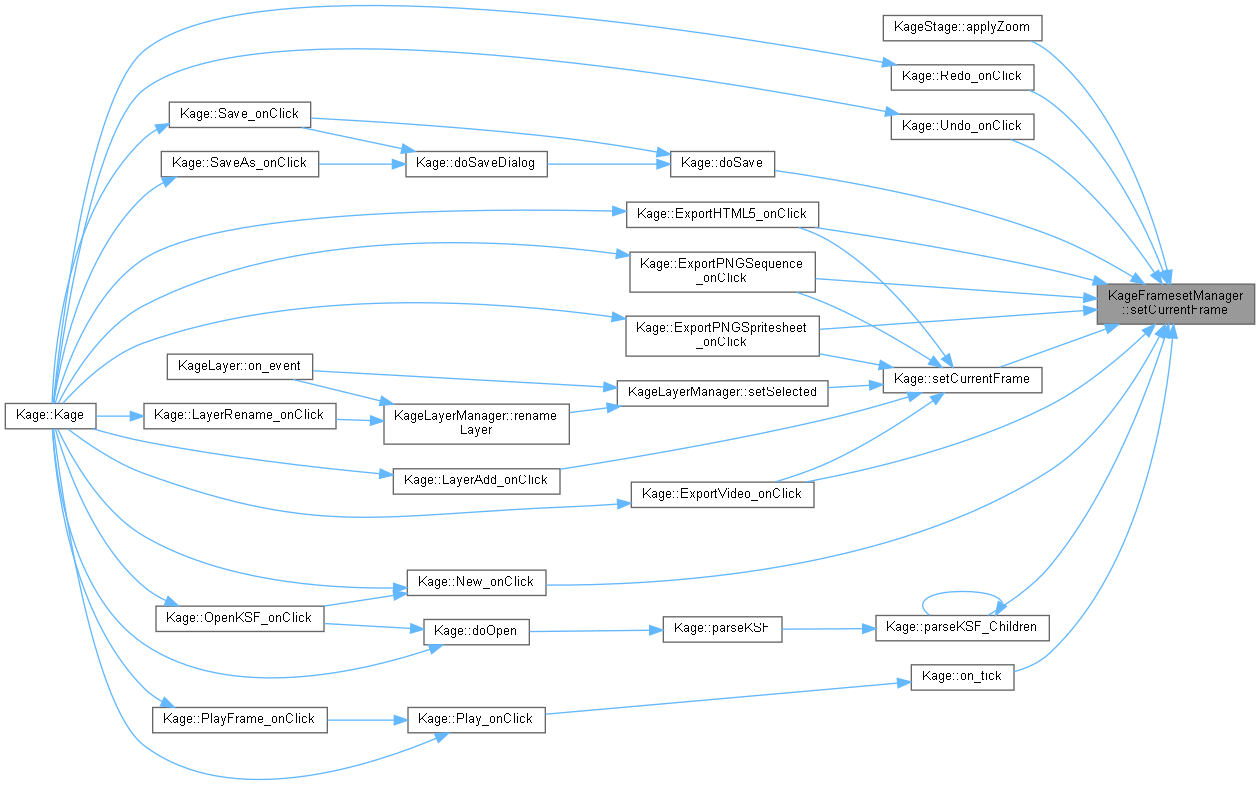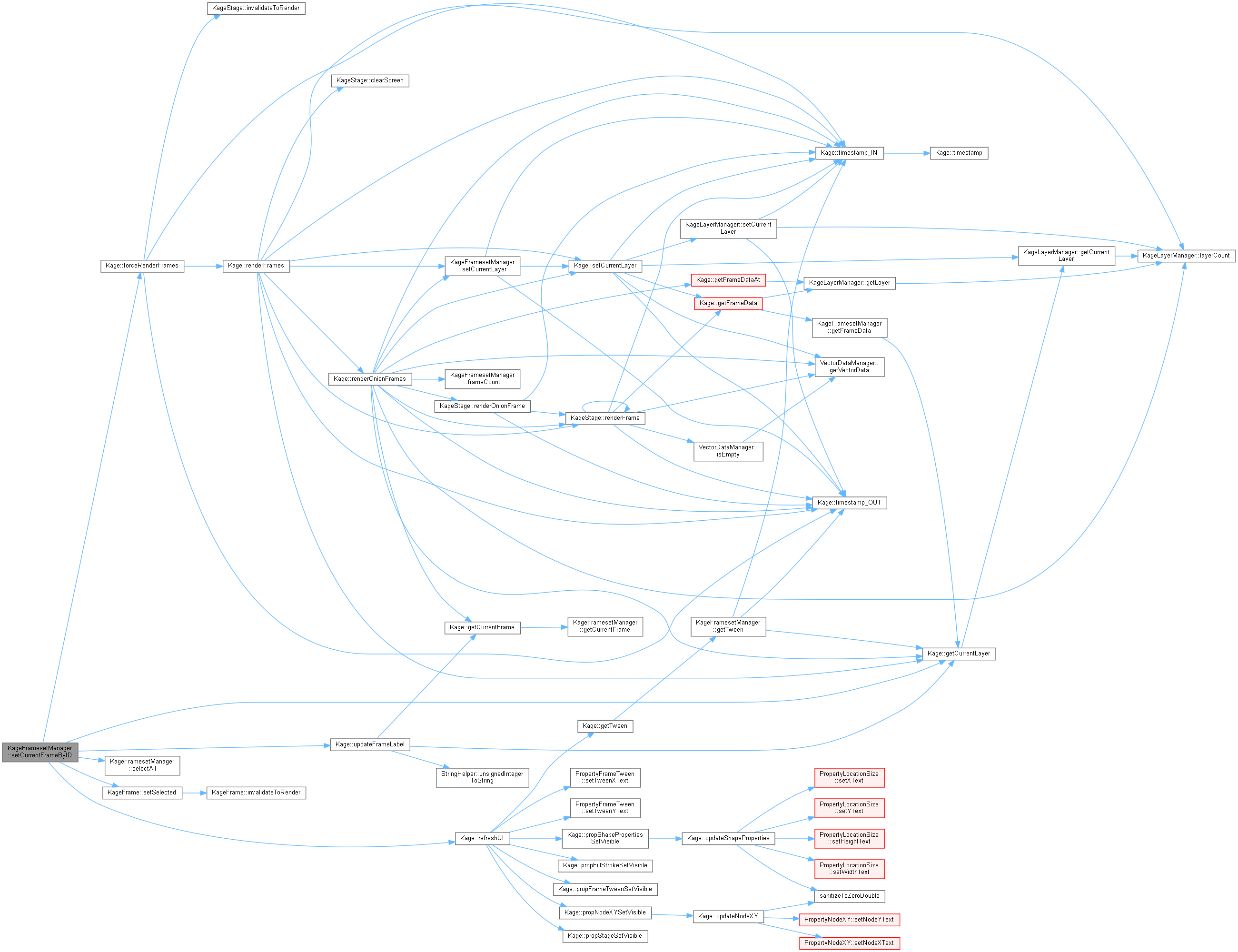#include <framesmanager.h>
◆ KageFramesetManager()
| KageFramesetManager::KageFramesetManager |
( |
Kage * |
p_win | ) |
|
◆ ~KageFramesetManager()
| KageFramesetManager::~KageFramesetManager |
( |
| ) |
|
|
virtual |
◆ addDataToFrame()
◆ addFrame()
| bool KageFramesetManager::addFrame |
( |
| ) |
|
◆ addFrameset()
| void KageFramesetManager::addFrameset |
( |
unsigned int |
p_layer | ) |
|
◆ deleteFrameset()
| void KageFramesetManager::deleteFrameset |
( |
unsigned int |
p_layer | ) |
|
◆ duplicateFrame()
| bool KageFramesetManager::duplicateFrame |
( |
| ) |
|
◆ duplicateShapes()
| vector< unsigned int > KageFramesetManager::duplicateShapes |
( |
vector< unsigned int > |
p_selectedShapes | ) |
|
◆ extendFrame()
| bool KageFramesetManager::extendFrame |
( |
| ) |
|
◆ flipHorizontalSelectedShape()
| bool KageFramesetManager::flipHorizontalSelectedShape |
( |
vector< unsigned int > |
p_selectedShapes | ) |
|
◆ flipVerticalSelectedShape()
| bool KageFramesetManager::flipVerticalSelectedShape |
( |
vector< unsigned int > |
p_selectedShapes | ) |
|
◆ forceSetTween()
| bool KageFramesetManager::forceSetTween |
( |
unsigned int |
p_tween | ) |
|
NOTE: "Frame" – NOT "frame ID".
◆ frameCount()
| unsigned int KageFramesetManager::frameCount |
( |
| ) |
|
◆ getCurrentFrame()
| unsigned int KageFramesetManager::getCurrentFrame |
( |
| ) |
|
◆ getCurrentLayer()
| unsigned int KageFramesetManager::getCurrentLayer |
( |
| ) |
|
◆ getFrame()
| KageFrame * KageFramesetManager::getFrame |
( |
| ) |
|
◆ getFrameAt()
| KageFrame * KageFramesetManager::getFrameAt |
( |
unsigned int |
p_frame | ) |
|
◆ getFrameData()
◆ getFrameDataAt()
◆ getTween()
| unsigned int KageFramesetManager::getTween |
( |
| ) |
|
◆ groupSelectedShapes()
| vector< unsigned int > KageFramesetManager::groupSelectedShapes |
( |
vector< unsigned int > |
p_selectedShapes | ) |
|
◆ layerCount()
| unsigned int KageFramesetManager::layerCount |
( |
| ) |
|
◆ lowerSelectedShape()
| vector< unsigned int > KageFramesetManager::lowerSelectedShape |
( |
vector< unsigned int > |
p_selectedShapes | ) |
|
◆ lowerToBottomSelectedShape()
| vector< unsigned int > KageFramesetManager::lowerToBottomSelectedShape |
( |
vector< unsigned int > |
p_selectedShapes | ) |
|
◆ moveDown()
| bool KageFramesetManager::moveDown |
( |
| ) |
|
◆ moveToBottom()
| bool KageFramesetManager::moveToBottom |
( |
| ) |
|
◆ moveToTop()
| bool KageFramesetManager::moveToTop |
( |
| ) |
|
◆ moveUp()
| bool KageFramesetManager::moveUp |
( |
| ) |
|
◆ raiseSelectedShape()
| vector< unsigned int > KageFramesetManager::raiseSelectedShape |
( |
vector< unsigned int > |
p_selectedShapes | ) |
|
◆ raiseToTopSelectedShape()
| vector< unsigned int > KageFramesetManager::raiseToTopSelectedShape |
( |
vector< unsigned int > |
p_selectedShapes | ) |
|
◆ recenterRotationPoint()
| bool KageFramesetManager::recenterRotationPoint |
( |
vector< unsigned int > |
p_selectedShapes | ) |
|
◆ removeAllFrames()
| bool KageFramesetManager::removeAllFrames |
( |
| ) |
|
◆ removeFrame()
| bool KageFramesetManager::removeFrame |
( |
| ) |
|
◆ renderStage()
| void KageFramesetManager::renderStage |
( |
| ) |
|
◆ selectAll()
| void KageFramesetManager::selectAll |
( |
bool |
p_selectAll | ) |
|
◆ setCurrentFrame()
| void KageFramesetManager::setCurrentFrame |
( |
unsigned int |
p_frame | ) |
|
◆ setCurrentFrameByID()
| void KageFramesetManager::setCurrentFrameByID |
( |
unsigned int |
p_frameID | ) |
|
◆ setCurrentLayer()
| void KageFramesetManager::setCurrentLayer |
( |
unsigned int |
p_currentLayer | ) |
|
◆ setCurrentLayerByID()
| void KageFramesetManager::setCurrentLayerByID |
( |
unsigned int |
p_layerID | ) |
|
◆ setFrameData()
◆ setFrameExtension()
Called by KageFrame for navigating to Next Frame.
◆ setTween()
| bool KageFramesetManager::setTween |
( |
unsigned int |
p_tween | ) |
|
◆ switchToNextFrame() [1/2]
| void KageFramesetManager::switchToNextFrame |
( |
| ) |
|
Called by KageFrame for navigating to Previous Frame.
◆ switchToNextFrame() [2/2]
| void KageFramesetManager::switchToNextFrame |
( |
unsigned int |
p_frameID | ) |
|
Called by Kage for navigating to Next Frame.
◆ switchToPreviousFrame() [1/2]
| void KageFramesetManager::switchToPreviousFrame |
( |
| ) |
|
◆ switchToPreviousFrame() [2/2]
| void KageFramesetManager::switchToPreviousFrame |
( |
unsigned int |
p_frameID | ) |
|
Called by Kage for navigating to Previous Frame.
◆ ungroupSelectedShapes()
| vector< unsigned int > KageFramesetManager::ungroupSelectedShapes |
( |
vector< unsigned int > |
p_selectedShapes | ) |
|
◆ _framesets
◆ LOADING_MODE
| bool KageFramesetManager::LOADING_MODE = false |
|
static |
◆ win
| Kage* KageFramesetManager::win |
|
protected |
The documentation for this class was generated from the following files:


